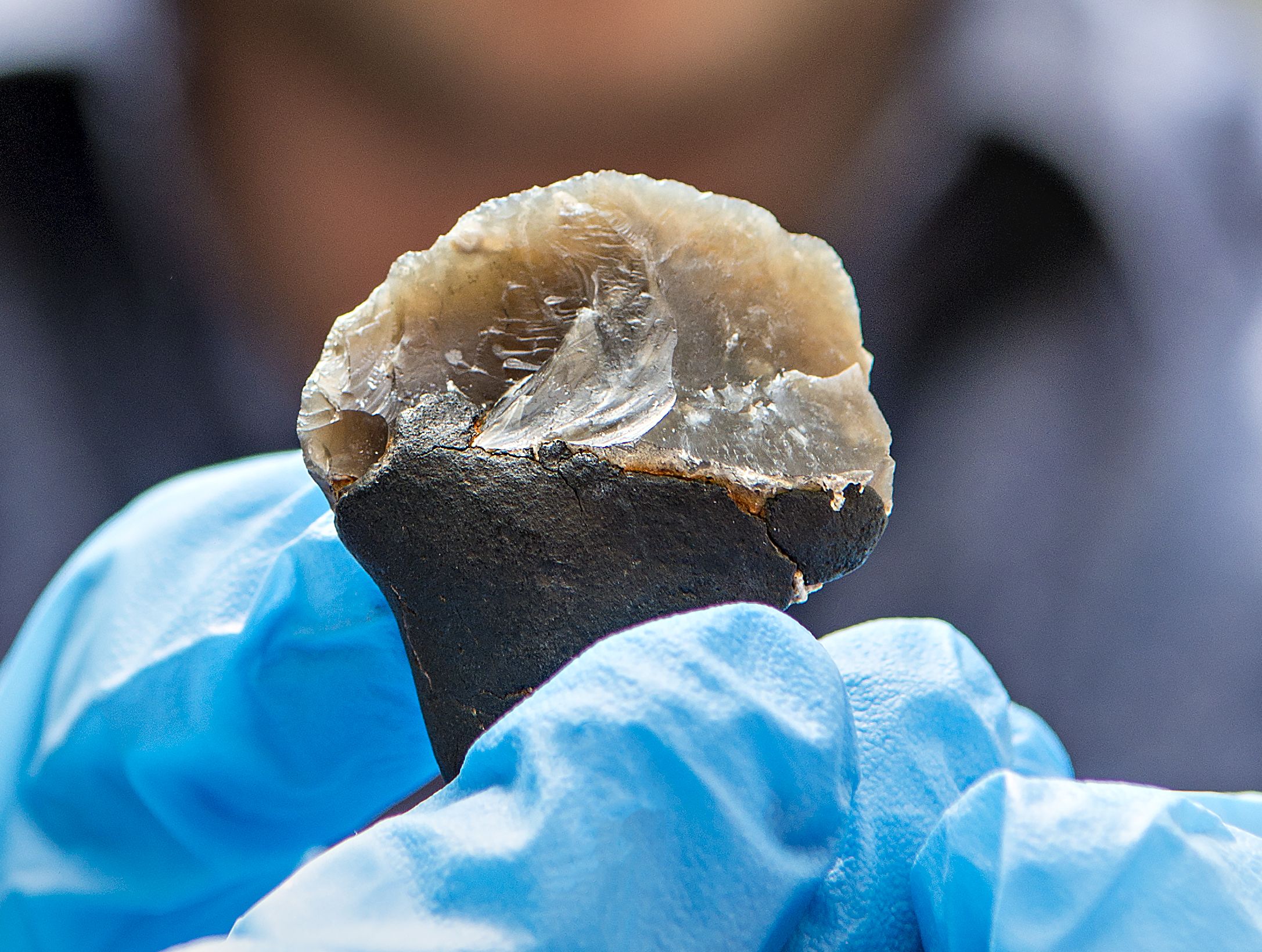A recently discovered flint stone tool, partly covered with tar, suggests Neanderthals used complex technology to fabricate instruments, Delft researchers conclude in PNAS.
(Photo: RMO)
Pottery didn’t exist 50,000 years ago, so Neanderthals had to be inventive to produce tar without fire-resistant containers. Or so Geeske Langejans, researcher at Materials Science and Engineering believes. She is one of the authors who last week described an interesting find, a flint stone tool, partly covered with tar, dating back to the last Ice Age. At that time Neanderthals inhabited the then dry North Sea lowlands that connected the Netherlands to the British Isles.
The tool was discovered in 2016 by an amateur archaeologist on the Sand Motor, the artificial beach near The Hague that required sand to be extracted 12 km off the coast. During the Ice Age this was a lowland area inhabited by Neanderthals.
The research conducted on the tool, which was published last week in the scientific journal Proceedings of the National Academy of Sciences (PNAS), was conducted by a team of researchers from TU Delft, the universities of Leiden, Utrecht and Groningen, Stichting Stone, the National Museum of Antiquities, the Dutch Cultural Heritage Agency and the Werkgroep Steentijd Noordzee.
The tar was used as an adhesive
Radiocarbon dating revealed that the tool had the unexpectedly old age of 50,000 years. It therefore predates the presence of modern humans in Europe and must have been made by Neanderthals. The four centimetre long find consists of a small flint tool encased by a lump of tar moulded around it. The chemical composition of the tar was examined by gas chromatography-mass spectrometry, and the constituents unambiguously point to birch pitch. The tar was used as an adhesive to make it easier to hold the flint.
Langejans, who is an expert in the area of materials science in archaeology, and her PhD student Paul Kozowyk fabricated birch tar, using techniques they consider may have been used by the Neanderthals. The methods ranged from very simple (a bark roll placed under hot embers) to more complex (an oven structure with catchment). They then compared the chemical composition and the contaminants of the tar they fabricated with the one produced by the Neanderthals. Langejans: “We showed that Neanderthals used a complex, high-yield production method.”
‘We showed that Neanderthals used a complex, high-yield production method for this tool’
The researchers believe that the stone tool was probably used in a domestic setting, around a campsite. The simple flint flake could have been used for cutting plants or scraping animal skins as a means to stave off the cold. They note that spending much time and effort to make such a simple tool, suggests that birch tar was more widely used by the Neanderthal than previously thought. Most examples of tools would have decayed long ago — the tool found by the researchers survived only because it was at the bottom of the North Sea for most of its existence.
- The flint tool with birch pitch can be seen in the central hall of the National Museum of Antiquities in Leiden from 22 October onwards. See also www.rmo.nl



Comments are closed.